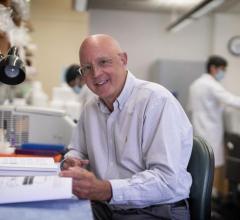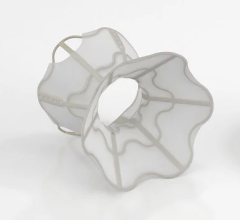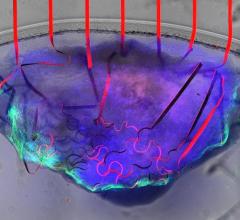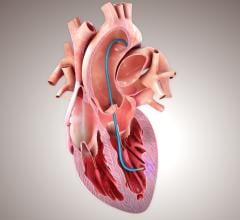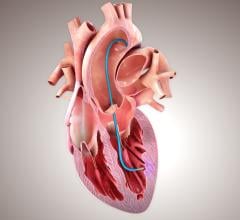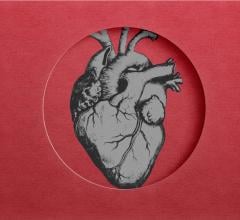July 5, 2016 — A research team has developed a new electric mesh device that can be wrapped around the heart to deliver electrical impulses and improve cardiac function in experimental models of heart failure. The team was led by investigators at Beth Israel Deaconess Medical Center (BIDMC) and Seoul National University.
The study, published in the June 22 issue of Science Translational Medicine, points to a potential new way of improving heart function and treating dangerous arrhythmias by compensating for damaged cardiac muscle and enabling healthy heart muscle to work more efficiently.
Under normal conditions, the heart pumps blood throughout the body through a series of coordinated contractions maintained by a carefully synchronized electrical conduction system. With the development of heart failure — when weakened heart muscle damages the heart’s pumping mechanism — this electrical conduction system can be damaged.
“Some patients with heart failure are treated with resynchronization therapy, in which three pairs of small electrodes are implanted with a pacemaker to keep the heart contracting coordinately,” explained corresponding author Hye Jin Hwang, M.D., Ph.D., a researcher in the Division of Cardiovascular Medicine in BIDMC’s CardioVascular Institute. “But pacemakers deliver electrical stimulation only at specific places in the heart and do not provide comprehensive coverage of the entire organ, as the heart’s own cardiac electrical conduction system does.”
The research team, therefore, set out to develop an alternative device that would more closely resemble the human heart.
“In developing the novel material for this device, we wanted to closely imitate cardiac tissue, which is very elastic, and also imitate its unique functions, which is highly conductive,” said Hwang, who collaborated with Seoul National University researchers Taeghwan Hyeon, Ph.D., a specialist in nanomaterials, and Dae-Hyeong Kim, Ph.D., a specialist in stretchable devices, to create the new nanocomposite.
The result was a new mesh device made up of nanowires, wires thinner than human hair, embedded in a rubber polymer that can conform to the unique three-dimensional anatomy of each individual heart.
“The mesh essentially wraps around and ‘hugs’ the heart and delivers electrical impulses to the whole ventricular myocardium, or heart muscle, “ said Hwang.
Tests of the device in models of rats showed that the mesh was integrating both structurally and electrically with the myocardium following heart attack, acting as a substructure of the heart during cardiac movement and improving cardiac contractile function without disturbing relaxation. The next step, the authors said, will be to evaluate long-term performance of the novel electrical therapy with an upgraded device in large animal models, with the ultimate goal of clinical application in humans.
“We knew that an integrated strategic approach that prevents and suppresses irregular heartbeat in addition to improving cardiac function would be a promising strategy for the treatment of heart failure, ventricular arrhythmias and sudden death,” said coauthor Mark E. Josephson, M.D., chairman emeritus of cardiovascular medicine at BIDMC, Distinguished Herman Dana Professor of Medicine at Harvard Medical School, and an international leader in the field of electrophysiology.
“The big advance here has been finding a way to create a device that more accurately mimics normal physiology,” explained Peter J. Zimetbaum, M.D., associate chief and director of clinical cardiology at BIDMC and associate professor of medicine at Harvard Medical School. “The concept of wrapping the heart is not new, but doing it with this attention to a more physiologic approach makes the device exceptionally smart. This is not just another mechanical assist device. It’s an innovative physiologic approach and provides an opportunity to bridge sophisticated engineering and medicine.”
This work was supported by a grant from the Ministry of Science, ICT and Future Planning in Korea, as well as support from the National Science Foundation and the Institute of Computer Engineering and Sciences, University of Texas, Austin.
For more information: www.stm.sciencemag.org

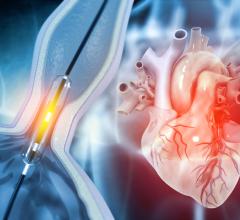
 April 16, 2024
April 16, 2024 
